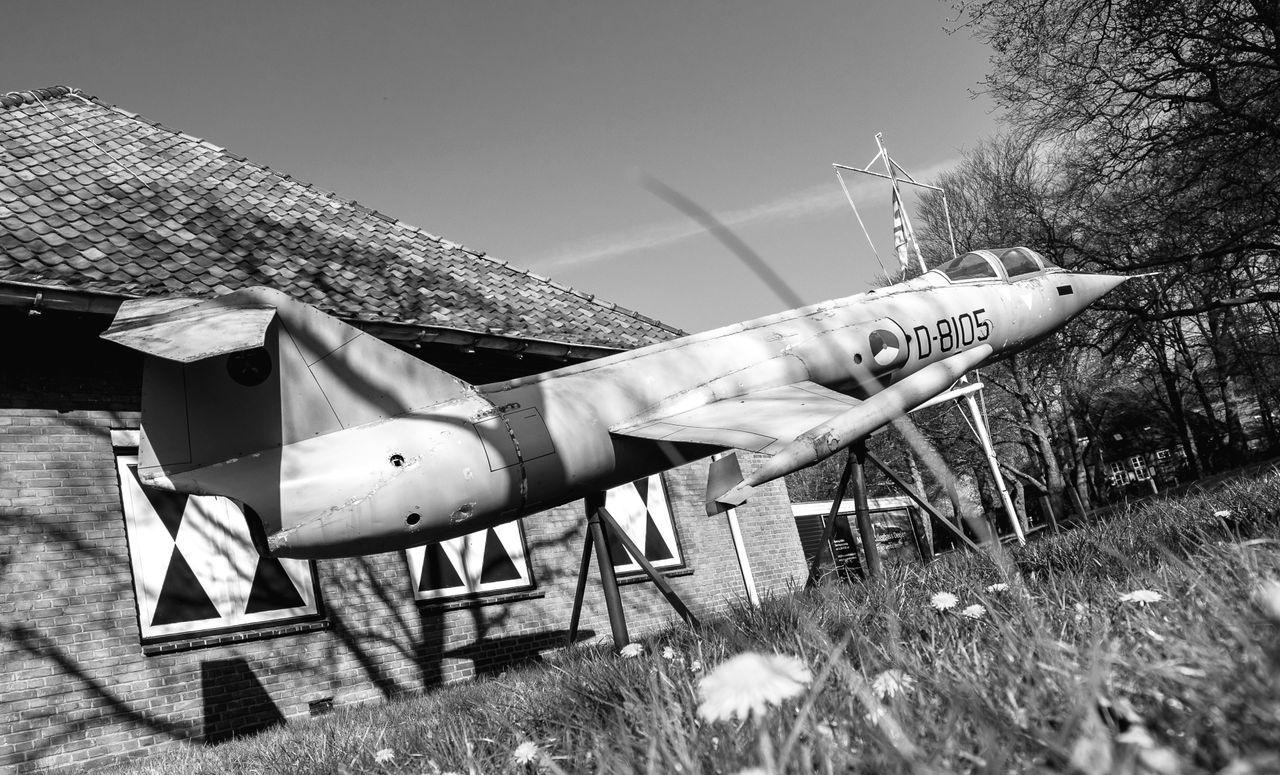After the First World War, the Dutch Aviation Department set up a small auxiliary airfield to the east of Kemperheide, at Deelen. This airfield enabled reconnaissance flights along the eastern border of the Netherlands. In May 1940, the Germans began constructing various airfields to facilitate the attack on England.
The construction of a large airfield was begun on Kemperheide firing range, with the support of Dutch contractors and thousands of Dutch labourers. Three runways were built in an ‘A’ configuration, as well as an administrative centre at Kop van Deelen. These were rapidly augmented by paved taxiways, aircraft parking positions and hangars. A railway line from Wolfheze was also constructed, known in Dutch as ‘het bommenlijntje’ (‘the little bomb line’) for transporting building materials, ammunition, guns, fuel and aeroplane parts. To the south of Koningsweg two large barracks were built for the 2,500 men operating the base: Groot Heidelager and Klein Heidelager (now: Oranje Barracks).
Deelen Airbase slowly grew into one of the biggest German airbases in the Netherlands. This Fliegerhorst with the codename ‘Alster’ (A=Arnhem) was also suitable for use by night fighters, a type of air combat that was still in its infancy.
The war in the air was growing ever bigger, and required central coordination. A major command centre was built for the 1st Fighter Division at Schaarsbergen near Koningsheide, and here they started experimenting with a support system for night fighters.
In late 1942, on Koningsweg, construction work started on a Grossraumgefechtsstand, a huge command bunker measuring 40 x 60 x 16 metres and with walls 3-4 metres thick, with the codename ‘Diogenes’ (D=Deelen). This centre brought together all communications from the Luftwaffe air observation stations, airfields and radar stations.
The area was subjected to heavy Allied bombing, especially in the run-up to Operation Market Garden (from August 1944 onwards), and this caused heavy damage to the airbase. At the start of September 1944, the operational aircraft were withdrawn to Germany, and on 18 September, the Germans themselves blew up the Diogenes command centre.
Following the liberation, Deelen was used as a dump for all kinds of surplus military equipment of the 1st Canadian Army. After 1950, the airbase came back into service, operated by the Royal Netherlands Air Force. In 1995, Deelen Airbase was closed and assigned the status ‘military aviation site’, now being used by the Airmobile Brigade for training with helicopters and transport aircraft. The Deelen Airbase Museum is accommodated in a former German army barracks next to the current airfield (www.museumdeelen.nl).
Do you want to experience this story in its original location? Then visit the information panel at Deelen airport, at bicycle junction 23.

